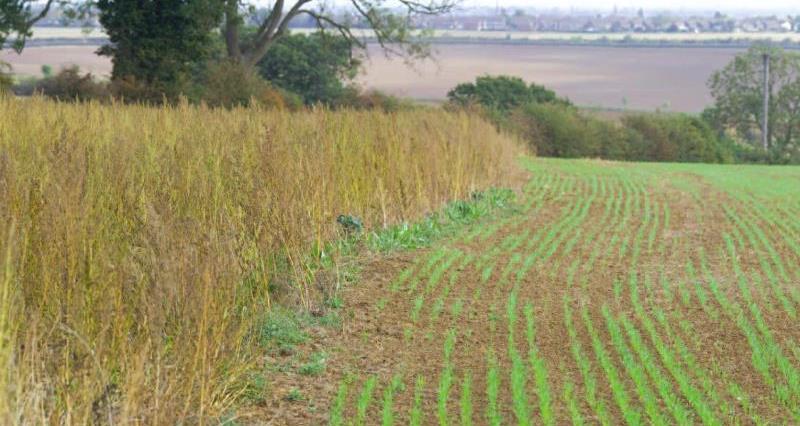What
The headland of a normal cereal crop can be left unharvested, or cereals can be drilled around other crops. The measure will deliver most when sited next to a buffer strip, stubble or area planted for wild bird seed or nectar flower mixtures.
Why
These areas will offer farmland birds excellent insect rich foraging habitat during the summer and a good grain supply during the winter months. They also provide a potential refuge for rare arable flowers and for small mammal species such as the harvest mouse.
This measure provides grain, insects and cover for game birds alongside its wider benefits for farmland birds.
How
Creation
- Sow and manage a 3–6m wide cereal headland along the edge of an arable crop outside the cross compliance protection area. This could be simply sown as part of your normal cereal rotation in that field.
- If autumn sown the area should be left for 18 months so that the grain is available for farmland birds through the second winter. Spring sown margins should be left for 12 months.
Management
- Avoid applying insecticides between mid-March and the following harvest.
- Leave untreated with pesticides except where necessary to protect the adjacent crop or to control pernicious weeds.
- Graminicides can be used for grass weed control and amidosulfuron for cleaver control where necessary.
- Unfertilised cereal headlands can be difficult to manage where grass weeds are a problem, particularly where herbicide resistance is present. If an unexpected weed infestation occurs and becomes unmanageable, select a less weedy location in following years.
- The headlands can move around the farm within the normal rotation or remain in the same place in the field.
